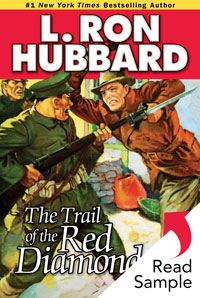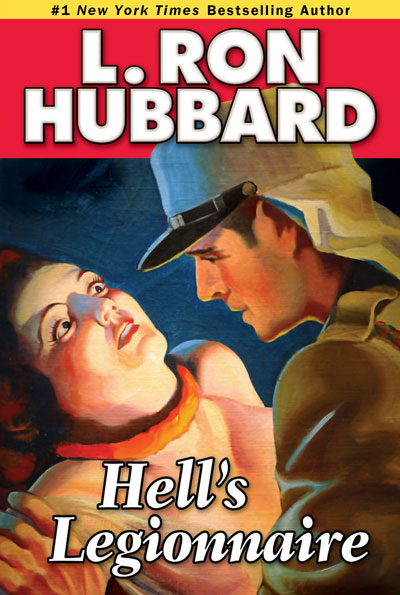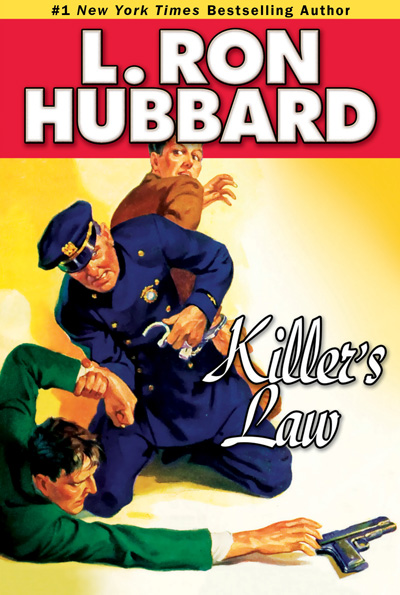The Trail of the Red Diamonds Glossary
Stories from the Golden Age reflect the words and expressions used in the 1930s and 1940s, adding unique flavor and authenticity to the tales. While a character’s speech may often reflect regional origins, it also can convey attitudes common in the day. So that readers can better grasp such cultural and historical terms, uncommon words or expressions of the era, the following glossary has been provided.
bandolier: a broad belt worn over the shoulder by soldiers and having a number of small loops or pockets for holding cartridges.
blackguard: a man who behaves in a dishonorable or contemptible way.
bull fiddle: also called a bass fiddle or double bass; the largest and lowest-pitched string instrument, and member of the violin family. It has a deep range, going as low as three octaves below middle C.
Chahar: a province of China in existence from 1912 to 1936, mostly covering the territory of what is now Inner Mongolia. It was named after the Chahar Mongolians. From 1935 to 1945 it was occupied by Japan. In 1952 the province was abolished and divided into parts of Inner Mongolia and other areas.
chamois: a leather that is extremely soft, flexible and absorbent, and is used to filter contamination and water from gas when filling a tank. Chamois has the unique quality of allowing gasoline to penetrate and run through it, but not water.
Coal Hill: an artificial hill in Peking (now Beijing) north of the Forbidden City, originally an imperial garden. According to Chinese custom, it was favorable to site a residence to the south of a nearby hill. When the capital was moved to Peking, no such hill existed so one was constructed entirely from the soil excavated in forming the moats of the Imperial Palace and nearby canals. Coal Hill is a direct translation of its old popular Chinese name Méishan.
cowl: a removable metal covering for an engine, especially an aircraft engine.
crosstree: the raised wooden pieces at the front and rear of the saddle that form a high pommel or horn in the front and cantle in the back.
cyanide mining: a highly toxic method of extracting gold and other metals from raw ore. Cyanide is applied to the ore, where it bonds with microscopic flecks of gold which are then recovered from the cyanide solution.
domino: an eye mask worn as a disguise at a masquerade party.
drome: short for airdrome; a military air base.
foils: airfoils; any surfaces (such as wings, propeller blades or rudders) designed to aid in lifting, directing or controlling an aircraft by using the current of air it moves through.
Forbidden City: a walled enclosure of central Peking, China, containing the palaces of twenty-four emperors in the Ming (1364–1644) and Qing (1644–1911) dynasties. It was formerly closed to the public, hence its name.
G-men: government men; agents of the Federal Bureau of Investigation.
Gobi: Asia’s largest desert, located in China and southern Mongolia.
Gran Chaco: region in south central South America, covering about 250,000 square miles (647,500 sq km), and encompassing part of Argentina, Paraguay and Bolivia. It is the location of the Chaco War (1932–1935), a border dispute fought between Bolivia and Paraguay over control of a great part of this region of South America that was incorrectly thought to be rich in oil.
ground loop: to cause an aircraft to ground loop, or make a sharp horizontal turn when taxiing, landing or taking off.
Hall of Classics: located next to the Temple of Confucius, the hall contains 189 stone tablets upon which are engraved the authorized texts of the Confucian classics.
Hataman Gate: gate near the Imperial Palace.
Hotel du Nord: oldest foreign hostelry in Peking, located near the Legation Quarter (walled city within the city exclusively for foreigners).
Hotel du Pekin: in the 1930s it was considered one of the finest hotels in the Orient. Built in 1917, the hotel had 200 rooms with baths, a tea hall with nightly dancing and its own orchestra for classical dinner music. It also had a spacious roof garden overlooking the Forbidden City and the Legation Quarter (walled city within the city exclusively for foreigners).
Inner Mongolia: an autonomous region of northeast China. Originally the southern section of Mongolia, it was annexed by China in 1635, later becoming an integral part of China in 1911.
jack: money.
Jehol: a former province in northeast China; traditionally the gateway to Mongolia, Jehol was the name used in the 1920s and 1930s for the Chinese province north of the Great Wall, west of Manchuria and east of Mongolia. It was seized by the Japanese in early 1933, and was annexed to Manchukuo and not restored to China until the end of World War II.
Kalgan: a city in northeast China near the Great Wall that served as both a commercial and a military center. Kalgan means “gate in a barrier” or “frontier” in Mongolian. It is the eastern entry into China from Inner Mongolia.
Khinghan Mountains: forested volcanic mountains extending 700 miles (1,126 km) along the eastern edge of the Mongolian Plateau (large plateau including the Gobi Desert) in western Manchuria. The mountains slope gently from the west, reaching moderate elevations of only 2,000 to 3,000 feet (610 to 915 meters).
Kobe: a seaport in southern Japan.
Kublai Khan: (1215–1294) military leader, grandson of Genghis Khan and the last ruler of the Khan empire.
Manchuria: a region of northeast China comprising the modern-day provinces of Heilongjiang, Jilin and Liaoning. It was the homeland of the Manchu people, who conquered China in the seventeenth century, and was hotly contested by the Russians and the Japanese in the late nineteenth and early twentieth centuries. Chinese Communists gained control of the area in 1948.
Mannlicher: a type of rifle equipped with a manually operated sliding bolt for loading cartridges for firing, as opposed to the more common rotating bolt of other rifles. Mannlicher rifles were considered reasonably strong and accurate.
Marco Polo: (1254?–1324?) Italian traveler who explored Asia (1271–1295). His book, The Travels of Marco Polo, was the only account of the Far East available to Europeans until the seventeenth century.
Mikado: the emperor of Japan; a title no longer used.
Mitsubi: a type of machine gun made by Mitsubishi, a Japanese aircraft manufacturer in the 1930s, known for its bombers and fighter planes.
Mukden: the capital city of the China province of Liaoning in northeast China.
Nanking: city in eastern China, on the Yangtze River. Now called Nanjing, it is the capital of Jiangsu Province.
Nankou: a city located northeast of Peking, near the Great Wall.
Nankou Pass: a large gap in the mountains that connects China with Mongolia and along which the Great Wall was built. Through this pass flowed all the vast volume of trade and travel between China and Mongolia. It was through here that the barbaric Mongols for centuries poured their armies to invade and devastate the plains and cities of China. It was to stop these dreaded invasions that the Great Wall was built.
out on my feet: in a state of being unconscious or senseless but still being on one’s feet—standing up.
oxide ore: mineralized rock in which some of the original minerals have been oxidized. Oxidation tends to make the ore more porous; that facilitates the flow of solutions into the rock. This effect is particularly important for oxidized gold ore, as it permits more complete permeation of cyanide solutions so that minute particles of gold in the interior of the mineral grains can be readily dissolved.
Peking: now Beijing, China.
pom-poms: antiaircraft guns or their fire. The term originally applied to the Maxim automatic gun (1899–1902) from the peculiar drumming sound it made when in action.
riffle box: in mining, a long sloping trough or the like, with raised obstructions called riffles, into which water is directed to separate gold from gravel or sand. The lighter material is carried in suspension down the length of the box and then discharged. The heavier material, such as gold, quickly drops to the bottom where it is entrapped by the riffles.
rudder: a device used to steer ships or aircraft. A rudder is a flat plane or sheet of material attached with hinges to the craft’s stern or tail. In typical aircraft, pedals operate rudders via mechanical linkages.
Scheherazade: the female narrator of The Arabian Nights, who during one thousand and one adventurous nights saved her life by entertaining her husband, the king, with stories.
Shamo desert: Chinese name for the Gobi Desert; Asia’s largest desert located in China and southern Mongolia.
Shanghai: city of eastern China at the mouth of the Yangtze River, and the largest city in the country. Shanghai was opened to foreign trade by treaty in 1842 and quickly prospered. France, Great Britain and the United States all held large concessions (rights to use land granted by a government) in the city until the early twentieth century.
Shiu: Shiu-kwan or Shao-kuan; city in southern China, former capital of Guangdong Province during the Japanese occupation (1938–1945) of Chinese coastal areas.
shrouds: the ropes connecting the harness and canopy of a parachute.
slipstream: the airstream pushed back by a revolving aircraft propeller.
Springfields: any of several types of rifles, named after Springfield, Massachusetts, site of the federal armory that made the rifles.
stamp mill: a machine that crushes ore.
strike colors: “striking the colors”; the universally recognized indication of surrender. The colors, a national flag or a battle ensign, are hauled down as a token of submission.
Taku: site of forts built in the 1500s to defend Tientsin against foreign invasion. The forts are located by the Hai River, 37 miles (60 km) southeast of Tientsin.
Tartar: a member of any of the various tribes, chiefly Mongolian and Turkish, who, originally under the leadership of Genghis Khan, overran Asia and much of eastern Europe in the Middle Ages. Also a member of the descendants of these people.
Tientsin: seaport located southeast of Peking; China’s third largest city and major transportation and trading center. Tientsin was a “Treaty Port,” a generic term used to denote Chinese cities open to foreign residence and trade, usually the result of a treaty.
tracer: a bullet or shell whose course is made visible by a trail of flames or smoke, used to assist in aiming.
turtleback: the part of the airplane behind the cockpit that is shaped like the back of a turtle.
Urga: now Ulan Bator; capital city of Mongolia.
volley fire: simultaneous artillery fire in which each piece is fired a specified number of rounds without regard to the other pieces, and as fast as accuracy will permit.
Wagon-Lit: Grand Hotel des Wagon-Lits, in Peking; the only hotel in the Legation Quarter (walled city within the city exclusively for foreigners). The hotel was built in 1905 to accommodate travelers from Europe on the Trans-Siberian Express. It stood in a large garden ornamented by stone fishponds, sole relics of ancient imperial offices, and the hotel bar was favored by diplomats.
war box: war sack; a duffel bag.
wingover: also known as the Immelmann turn; an aerial maneuver named after World War I flying ace Max Immelmann. The pilot pulls the aircraft into a vertical climb, applying full rudder as the speed drops, then rolls the aircraft while pulling back slightly on the stick, causing the aircraft to dive back down in the opposite direction. It has become one of the most popular aerial maneuvers in the world.
Yellow Sea: an arm of the Pacific Ocean between the Chinese mainland and the Korean Peninsula. It connects with the East China Sea to the south.












